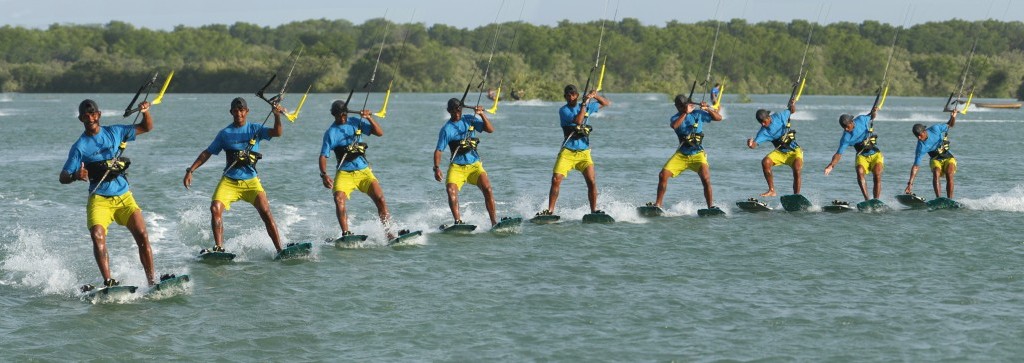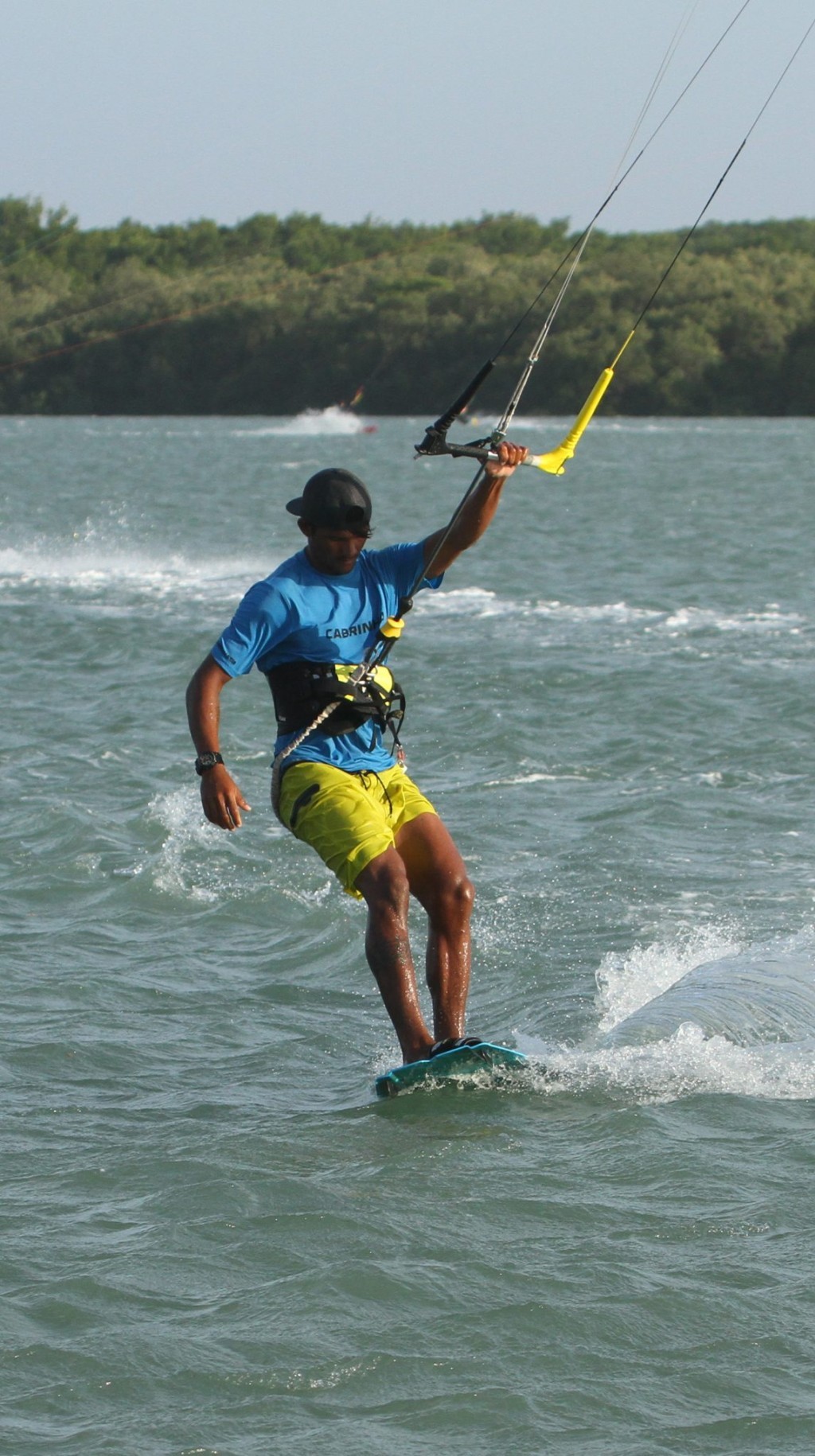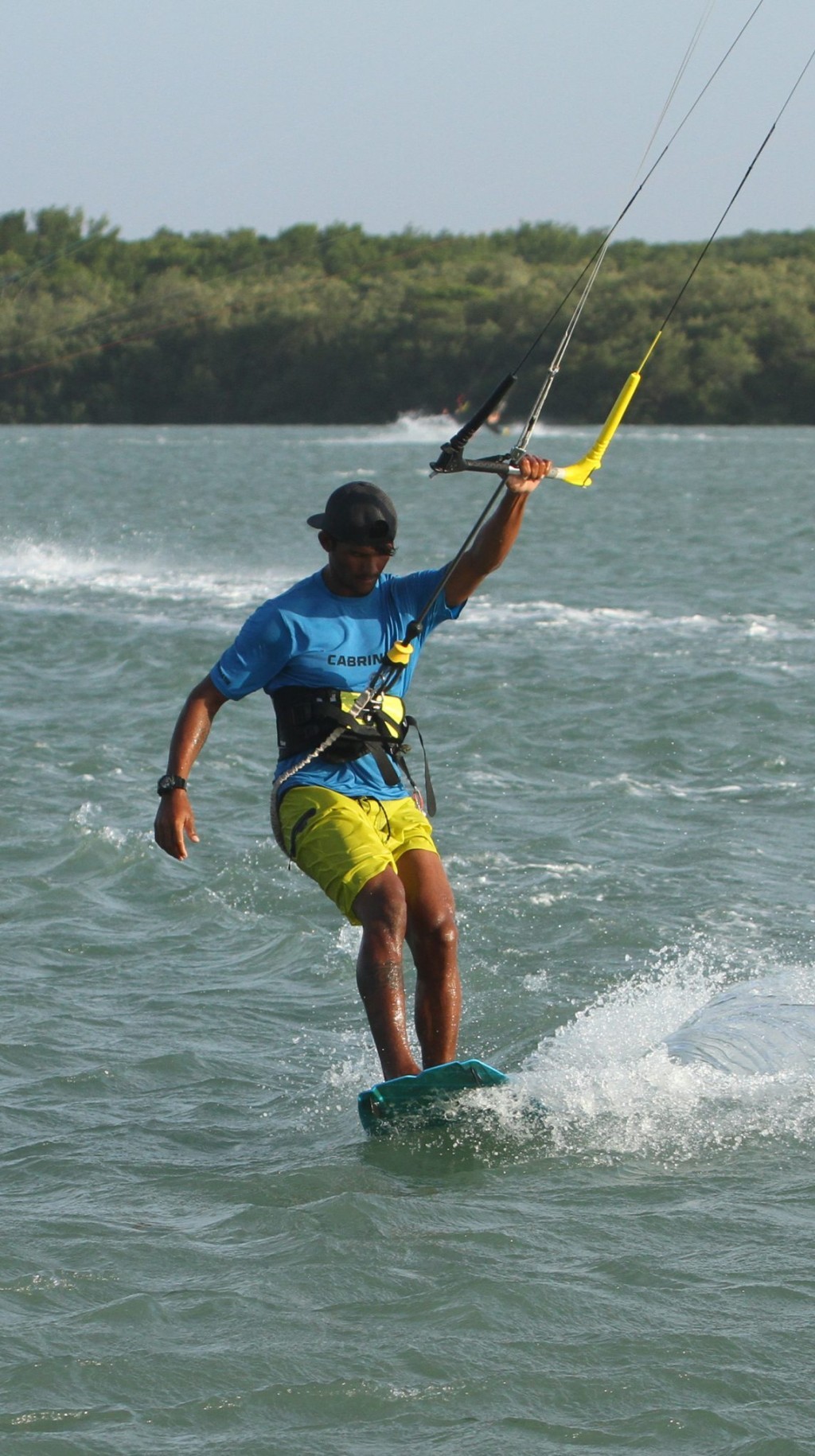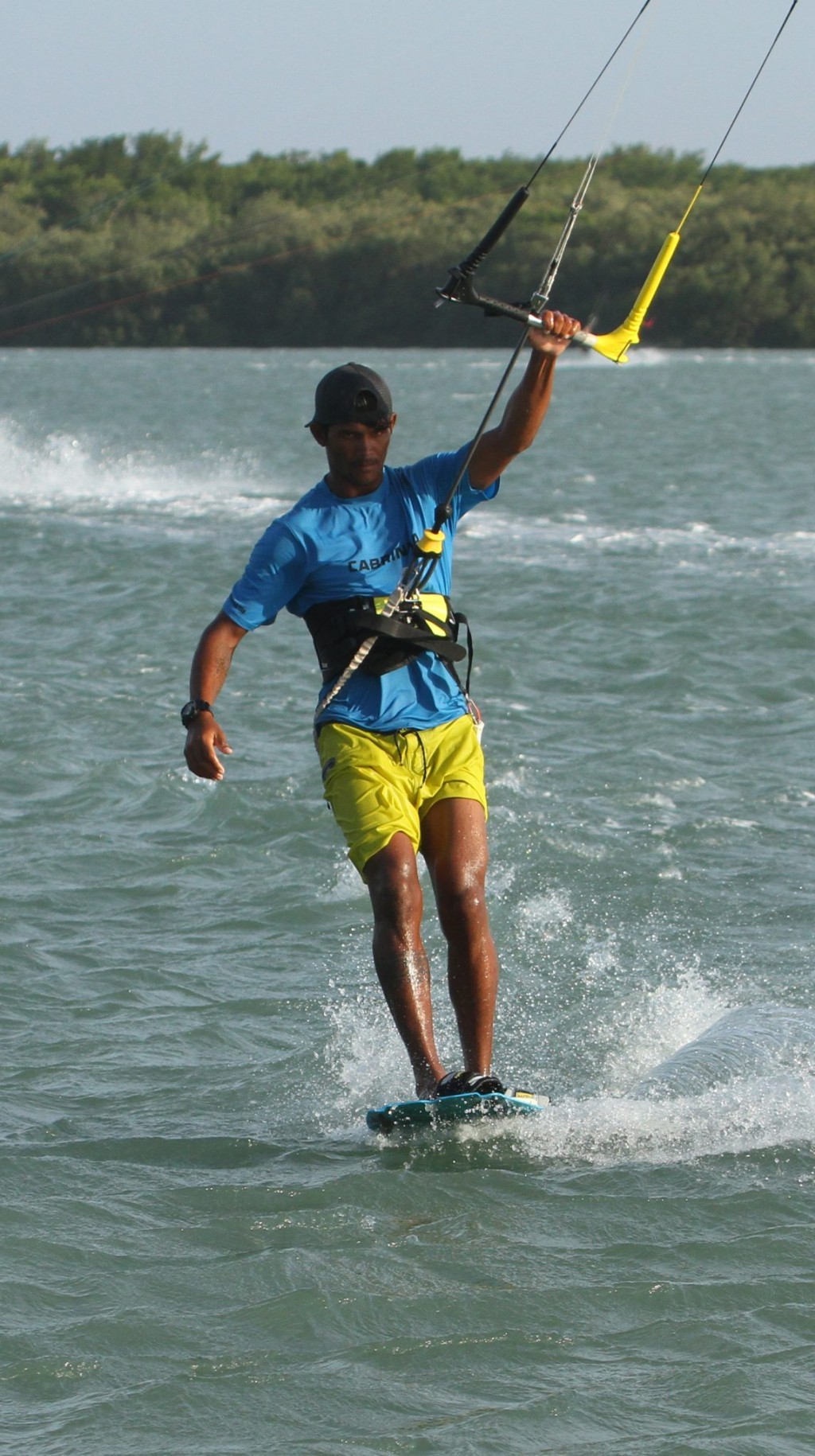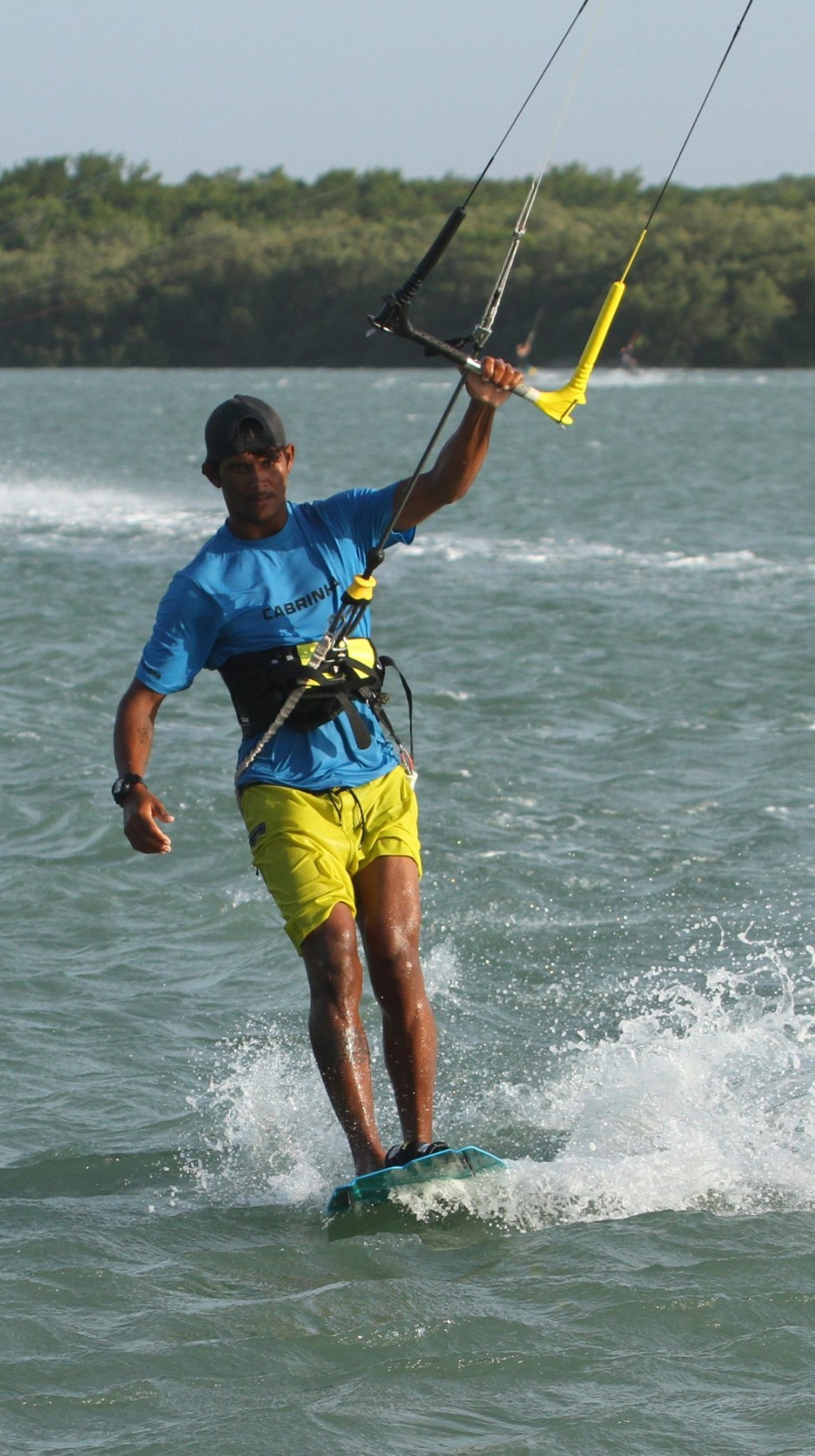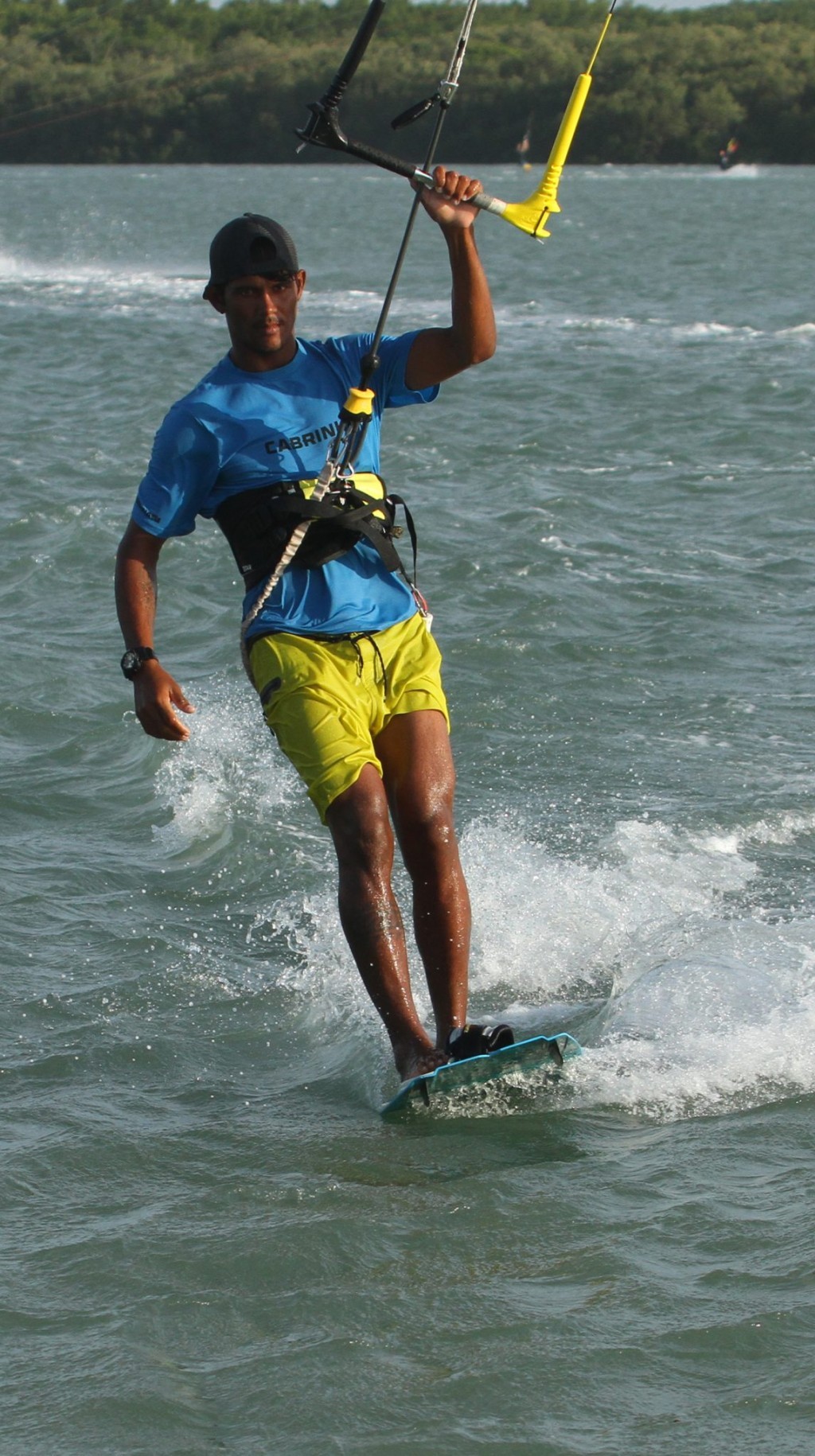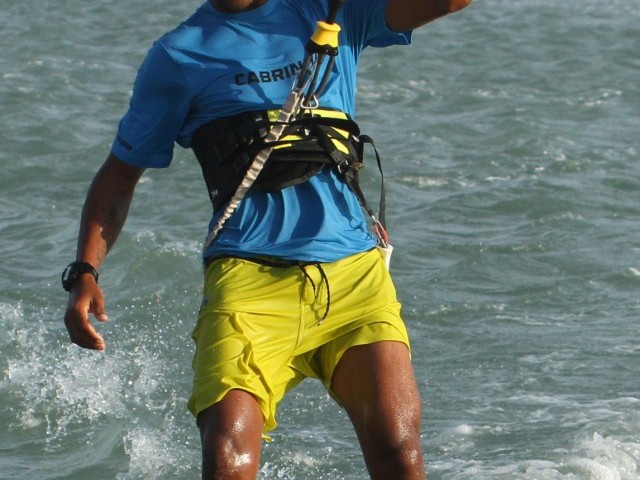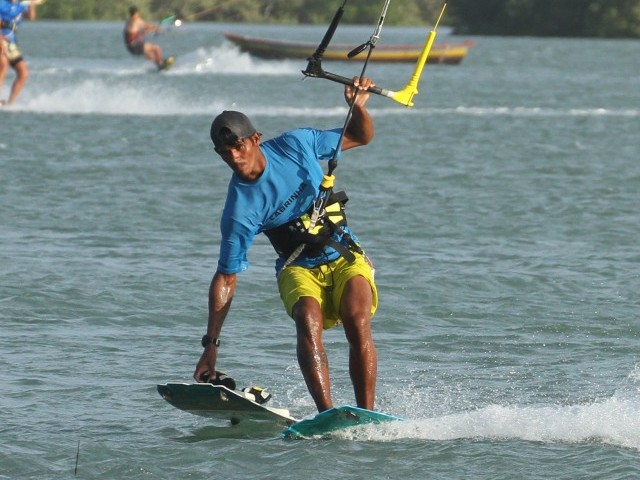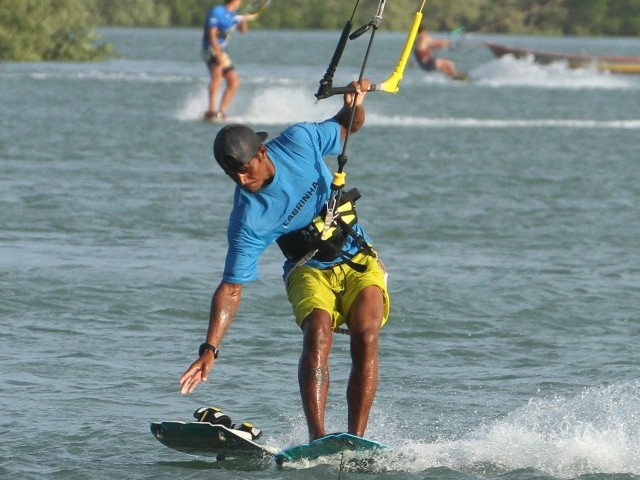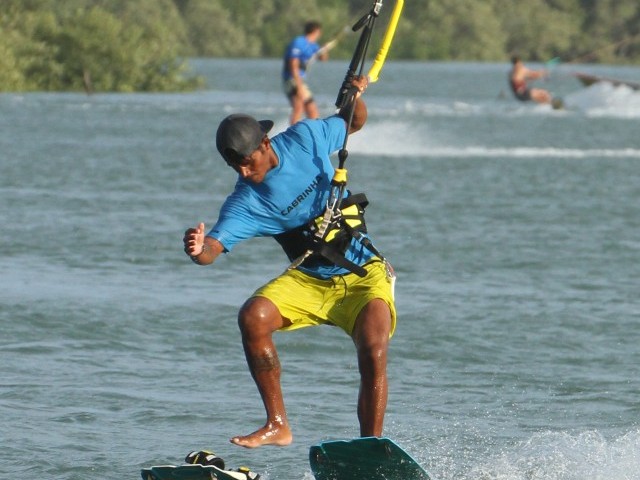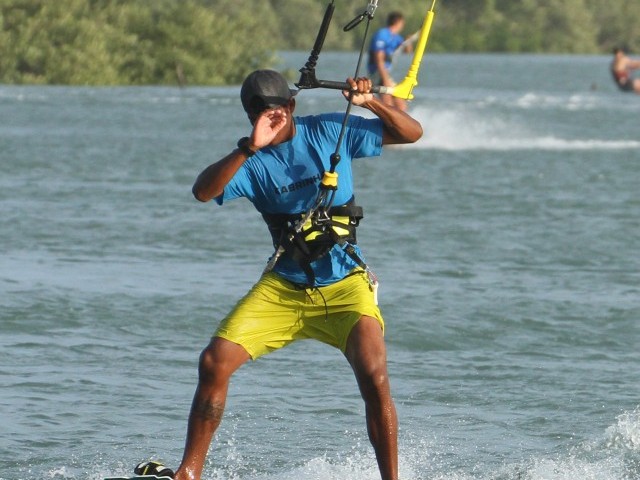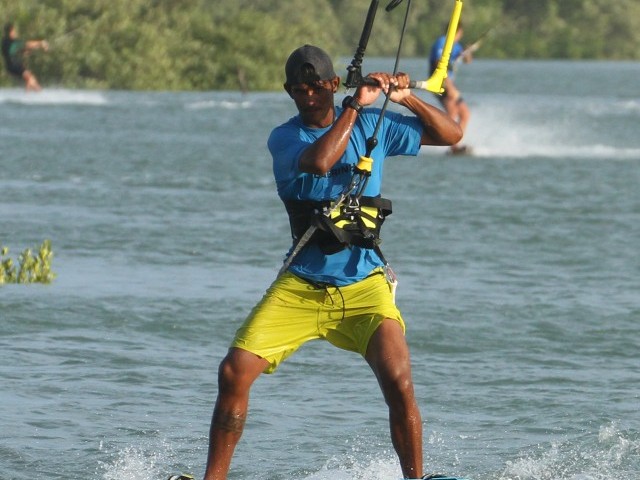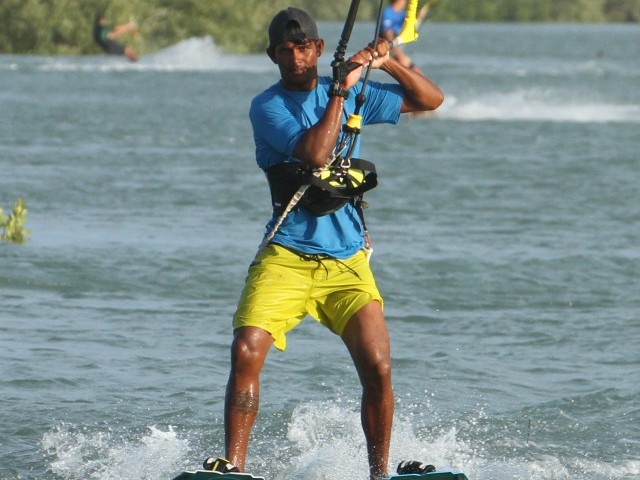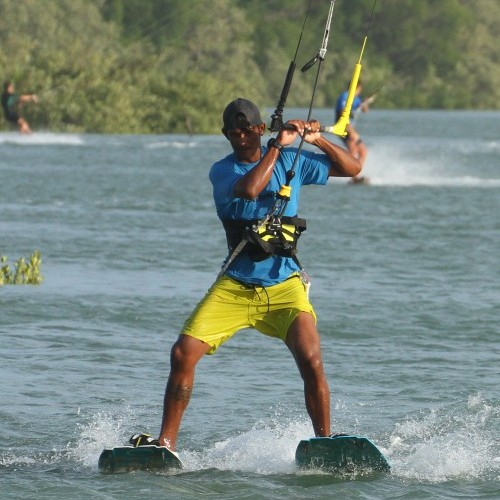
Water Skiing
Technique / Intermediate
Introduction
When you’re as helpful as Heliarde, you’ll often find yourself with two boards, having just fished one out of the mangroves from the last person who tried to jump them. As such there are a few ways to return to sender, and this one is a firm favourite well worthy of a cheeky grin and a nod from the great Dave Hazelwood.
This is really a move of two parts, getting yourself into position on your board, before launching your backup craft and deftly clambering aboard. Unlike water skiing, we’ll learn to use one ski before chancing it with two! Entao, como fazer….
Part 1 – The Mono
Back Foot Pic A.
Your first goal is to get your back foot out of the strap and positioned with your toes over the centre of the board, just behind the front strap and your heel on the edge. This positioning will keep the board trimmed enough from tail to nose to plane, while enabling you to edge against the kite and keep tension and control. With your kite, around 11 or 1 o’clock start on an edge and gradually shift your weight forward onto your front foot. Once your balanced and your back foot is unweighted, you can slide it out of the strap and move it forwards. Here Heliarde is looking at his foot and the board so that he steps up to the right place, and you can see how the nose of the board is down because his weight is on his front foot.
Weight Change Pic B.
With his back foot now in position, Heliarde moves his weight back onto it. This is the dodgy moment as with all his weight moving back the board will slow, and the kite can, therefore, pull you off balance as the board drags through the water. If you feel the kite pulling too much, you can feather the bar out.
Front Foot Out Pic C.
Once you’re balanced, you can gently twist your front foot out of the strap so that the heel comes back towards your other foot. There is no need to lift your foot, just gently unweight and slide. Top tip here is to look at how upright Heliarde is. If you bend at the waist, the kite is more likely to pull you forwards over the nose, so keep your core strong and head up.
Edge and Prepare Pic D.
With both feet now side by side on the board, your best bet is to get back on an edge. Otherwise, the board will head under the kite, you’ll lose tension, and the result will be exactly like learning to water-ski - you’ll pull on the bar and fall backwards. You can see that Heliarde has his weight on the upwind foot, which puts the board back on and edge. Only now can you wiggle your original back foot around to find the sweet spot on the board.
Dropping a Ski Pic E.
Now that you’re on the sweet spot you can lift your upwind foot, freeing it to skim the water and dreaming of placing it on another board. In the pic, you can see that with an edge in Heliarde can pull the bar in a tad to keep the power on…
Part 2 – Two Skis
Once you’ve nailed the above and can one leg around your local spot, it’s time to get both skis on
Get Down Pic 1.
With the aim of claiming some distance while on two boards, you will need a bit more speed and momentum, to begin with, hence the need for an edge. This will also prevent you from being knocked off by any ripples or chop. So come in holding the spare board by the front strap out to your upwind side. Next thing to ponder is the fact that you want your skis parallel. This means placing the other board down. If you drop it, it’ll get left behind. As Heliarde demonstrates, he’s bending so that he can get the board low and flat, so that it’s skimming across the water, rather than bouncing.
The Drop Pic 2.
With the board whizzing along beside you, bring it in close, within striking distance and then extend your arm out ahead of you before releasing the board. Stay low while doing this and if the planets align the board will skim along beside you like an obedient canine.
One Shot Pic 3.
As soon as you’ve released the board the clock is ticking, every nanosecond the board will be slowing, which increases the chance of you overtaking it and then leaving it behind, overrunning the pass so to speak. You can see that Heliarde has his eyes on the prize. He’s focused on where he wants to get his foot.
Foot Plant Pic 4.
Staying low enables him to get over the board which means that he can push his foot down onto it, planting his weight onto the deck. Again you can feather the bar in or out to control your speed. You need to get your foot in a similar position to the other one, facing forwards but straddling the centreline, so that you can control where it goes…
Multi-Tasking Pic 5.
Even though playing the drums well with both feet is hard, most of us can drive a car, so there is hope that you’ll do the splits like Jean-Claude Van Dam, nor cross your feet like some sequin sporting 80’s roller disco freak (but wasn’t it fun). With both feet on the respective boards, you need to try and get them both going in the same direction. The simplest way to do this is to keep the new board going straight and control the direction of your original board as you had the opportunity to position that foot properly before going all out. Her Heliarde is bringing his original board upwind towards the new one.
Claim It Pic 6.
Once you’ve got both boards/skis happily moving in the same direction, you can relax and get some power back in the kite, controlling your edge with the downwind board. What could possibly go wrong?
Top Tips
It goes without saying that flat water will make this considerably easier. Loosening your feet in the straps before going for it will also smooth out any early stage glitches, while keeping your core strong and head up will encourage you to move with the board, not just the kite. And finally, do use the bar to control power by sheeting in and out.
Now that you know both parts, have a look at the videos and sequence to visualise exactly how you’ll be doing it next time you go out on the water.
Common Problems
Losing all speed when moving your feet in preparation will always be the result of taking the kite too high to support yourself in preference to keeping an edge, as the board flattens and you’ll move under the kite.
Missing the board with your free foot. Keep it low so that it’s going as fast as you and keep it extended out in front of you to give you a bit of extra time.
If you can’t control the new board at all, it is likely that your kite is too high and that you’re not low enough. The result is that you can’t get enough weight on it quickly enough. So, stay low.
Keystones
- Edge
- Move weight onto other foot before moving foot out of strap
- Keep low, board low and out in front
- Weight onto new board
- Control direction with original board
This technique article was in Issue 66 of IKSURFMAG.
Related
By Christian and Karine
Christian and Karine have been working together as a coaching team, running improver to advanced kitesurfing clinics since 2003.






